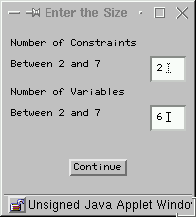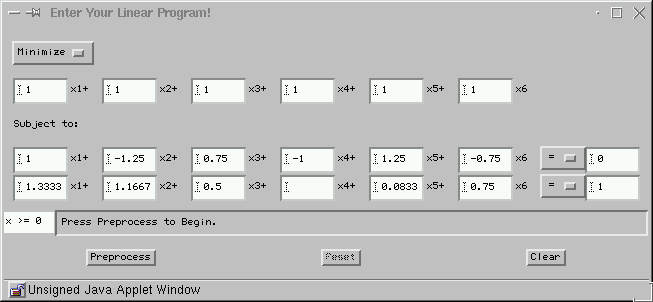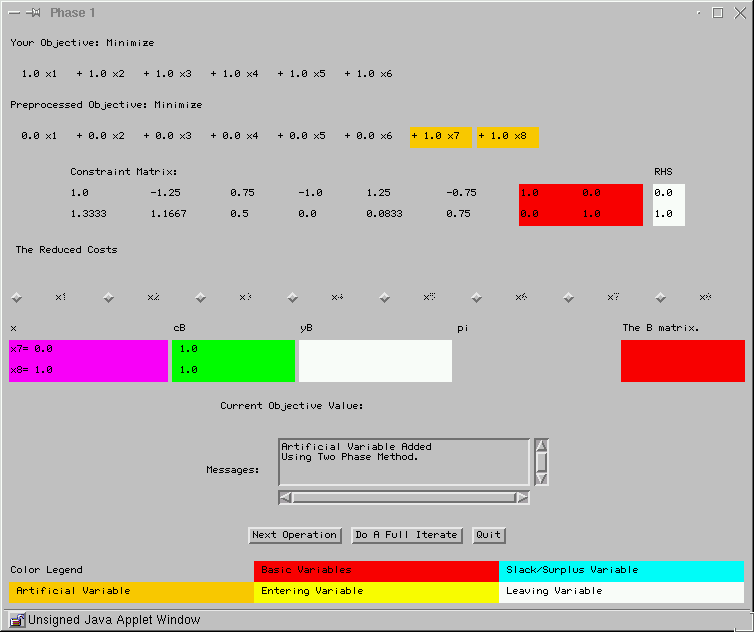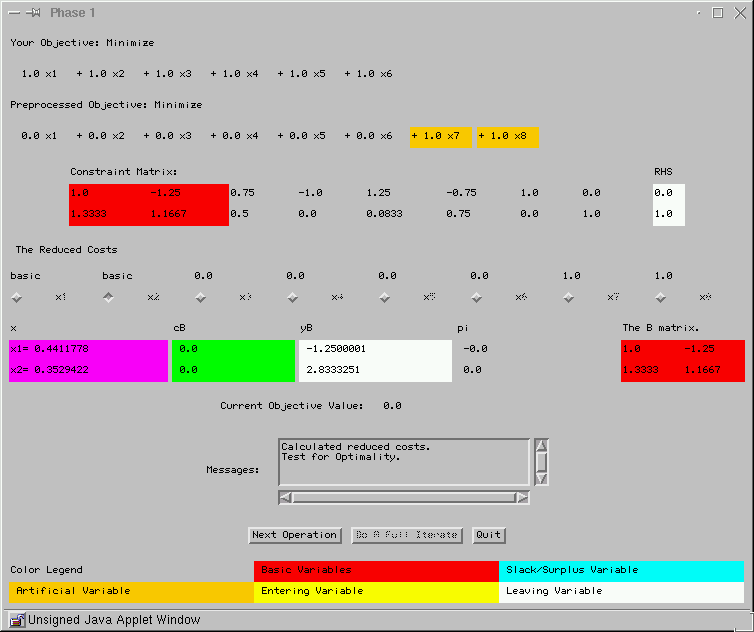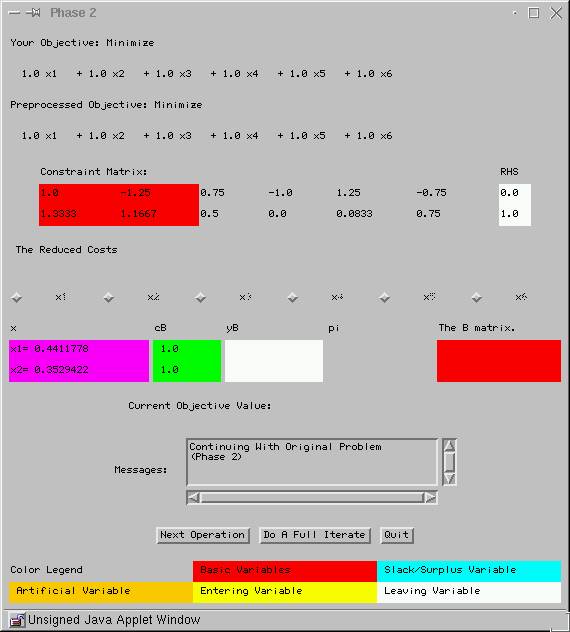Users can select the size of the problem
that they want to solve (up to 7 variables and 7 constraints), enter the
data, and watch the simplex method go through each step of each iteration
of the method. The display is color coded to show basic variables plus
which variables are entering and leaving the basis.
This tool is easy to use and it nicely
explains each single step. Its disadvantage is the limited size of the
problem and the manual data input. The readers can use it to get an insight
into the simplex algorithm. To illustrate the basic features of this applet,
we present the solution of Example 11.3 from the
book. The initial simplex tableau was listed in the book in Table 11.3(a).
After clicking on the applet control "New Problem", we specify the number
of constraints and variables in the first window:
The applet then opens an input window
where the objective function and the constraints can be specified:
In the book, the initial feasible solution
was constructed by selecting the last two variables as basic, see Table
11.3(b). However, this choice was based on our insight into the physical
meaning of the problem. The applet constructs the initial feasible solution
by solving an auxiliary problem with two artificial variables. This is
called "Phase 1":
During Phase 1, the artificial variables
x7 and x8 leave the basis and are replaced by x1 and x2:
This procedure guarantees that the
basic solution with x1 and x2 taken as basic variables is feasible. In
Phase 2, the artificial variables are dropped and the actual objective
function is activated:
Incidentally, it turns out that this
basic feasible solution is already optimal:
The optimal solution x1=0.441 and x2=0.353
and the minimized value of the objective function 0.794 are in agreement
with Table 11.3(d) from the book.
